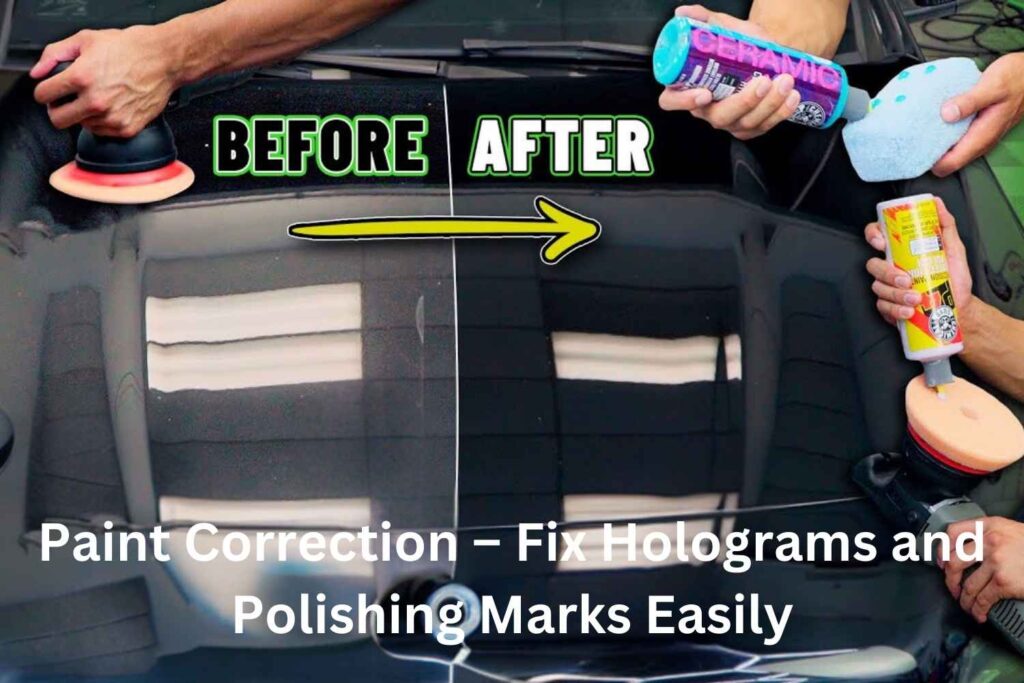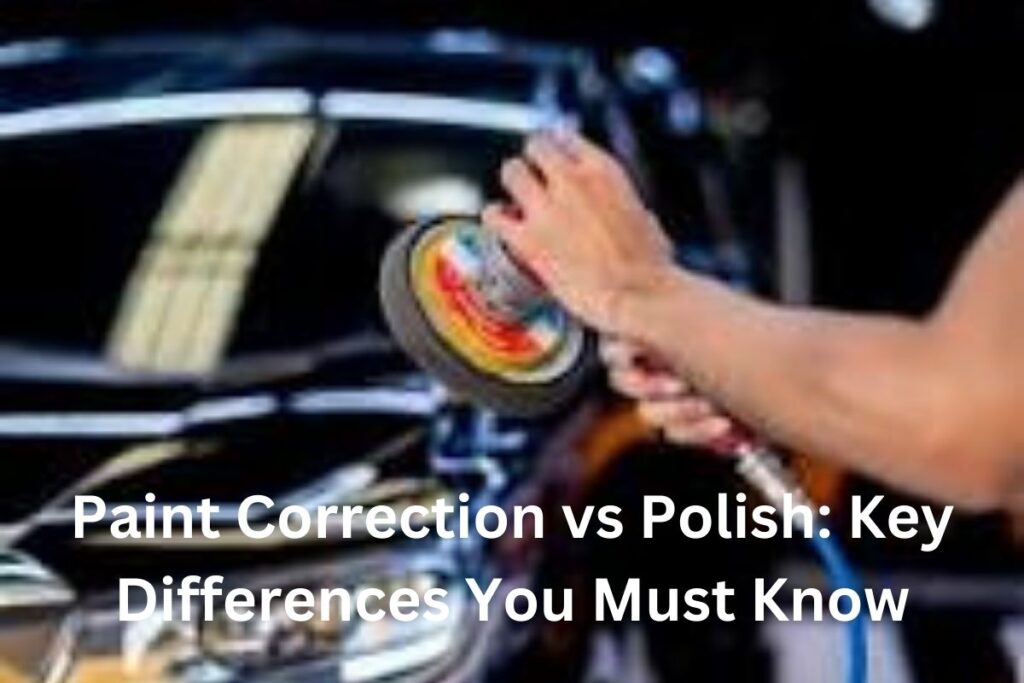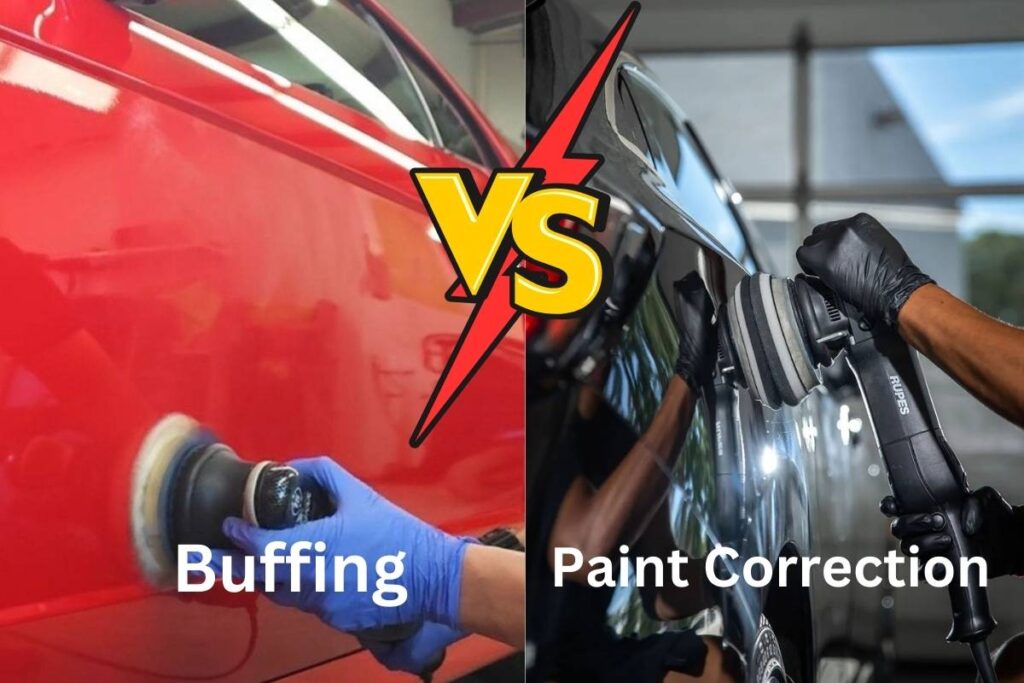Ever wondered why some car scratches are hard to remove while others vanish with a simple polish? The secret lies in the type of paint your car has—hard paint vs soft paint. These two types behave very differently, affecting how you approach paint correction and maintenance. Choosing the wrong method can waste time or even damage your vehicle’s finish.
In this blog post, you’ll discover the key differences between hard paint and soft paint, how to identify each, and the best correction techniques for both. By the end, you’ll have the knowledge to achieve a flawless, professional-level finish and keep your car looking its best.
Table of Contents
ToggleUnderstanding Paint Hardness

Car paint has different levels of hardness. Some are hard. Others are soft. This depends on the materials and how the paint is made. Manufacturers decide the type of paint based on their design and durability goals.
Hard paint resists scratches better. It can take more effort to fix imperfections. Soft paint is easier to correct, but it gets new scratches more quickly. These differences are key in understanding “hard paint vs soft paint.”
Hardness is not visible. You cannot tell by looking at the car. Testing the paint with polishing methods or researching the car’s make and model helps identify it. Brands like Toyota often use soft paint. German cars, such as BMW or Mercedes, tend to have harder paint.
Knowing whether the paint is hard or soft makes correction easier. It helps in choosing the right tools and techniques to get a flawless finish.
Identifying Paint Hardness
Not all paint types are obvious to the eye. Hard paint vs soft paint requires testing to figure out the difference. This step is important before starting paint correction. Without knowing, you risk wasting effort or making the paint worse.
The easiest way to check is by doing a small test spot. Use a light polish and a soft pad on a tiny area. Observe how the paint reacts. Hard paint takes longer to correct. Soft paint reacts quickly, but you may notice new scratches forming.
Look for signs like resistance to scratches. Hard paint often feels tough and resists swirl marks. Soft paint scratches easily, even with gentle cleaning. Certain tools, like a paint thickness gauge, also help. These devices measure the layer thickness and give clues about the hardness.
Experience also plays a role. Some brands and car types are known for specific paint types. For example, Audi cars often have harder paint. Toyota or Mazda cars tend to have softer paint.
Learning to spot these differences makes the correction process smoother. It helps you pick the right tools and avoid mistakes. Each paint type has its challenges, and starting with the right knowledge saves time and effort.
Differences Between Hard Paint vs Soft Paint

Hard paint vs soft paint is not just about the feel of the surface. Both types behave differently during paint correction. Knowing these differences makes it easier to plan your work.
Hard paint resists scratches more than soft paint. It stays smooth even after multiple washes. This type needs more effort during correction. You need stronger compounds and a more aggressive pad to remove defects. Without enough pressure, the scratches may remain visible.
Soft paint corrects faster. Even light polishing can remove defects. But soft paint scratches easily. This means you must work carefully. Using the wrong pad or too much force can leave new marks. Swirl marks are common with soft paint if the process is not gentle.
Hard paint takes more time but is durable once polished. Soft paint saves time during correction but requires careful handling to prevent damage. Each type comes with its challenges. Learning these differences ensures a better result.
Paint Correction Techniques for Hard Paint
Hard paint requires more effort to correct. Defects like swirl marks or scratches stay longer on the surface. This type of paint needs stronger tools and materials.
Use a polishing compound made for deep correction. Combine it with a firm cutting pad. This combination helps remove defects more effectively. Machines like a dual-action polisher work well on hard paint. They provide enough power to break down scratches without harming the surface.
Apply steady pressure during the process. Lighter pressure may not achieve the desired results. Hard paint can handle more aggressive techniques. This makes it important to choose the right compound and pad for each defect.
Work slowly in small sections. This ensures even correction. Rushing might leave some areas unfinished. After the defects are corrected, finish with a fine polish to bring back the gloss.
Hard paint vs soft paint demands a tailored approach. Understanding the tools and steps for hard paint ensures a smooth and professional finish.
Paint Correction Techniques for Soft Paint
Soft paint needs extra care during correction. It is easier to polish, but mistakes can happen quickly. This type of paint scratches easily, so using the right tools is important.
Use a gentle polish made for light correction. Combine it with a soft foam pad. Avoid cutting pads as they can leave new scratches. Start with the least aggressive option and increase only if needed.
Work with light pressure. Too much force can damage the paint. Machines like a dual-action polisher are safe for soft paint. They allow control and reduce the risk of mistakes.
Divide the surface into small sections. This ensures even polishing. Avoid working too long on one spot, as it may heat the paint. Polishing in short bursts helps maintain a smooth finish.
After correcting defects, use a finishing polish. This adds shine without harming the surface. Soft paint needs gentle handling even after correction.
Hard paint vs soft paint requires different techniques. Soft paint is more forgiving during correction but demands caution to avoid new scratches.
Hard Paint vs Soft Paint: Maintenance and Care Post-Correction

Proper care keeps the paint looking good after correction. Hard paint vs soft paint needs different approaches for maintenance. Each type has unique requirements to prevent future damage.
For hard paint, focus on protection. Apply a durable sealant or ceramic coating. These products help protect the surface from scratches and fading. Regular waxing adds another layer of defense.
Soft paint benefits from gentle handling. Avoid harsh chemicals or abrasive tools. Use soft microfiber towels for washing and drying. A good-quality wax or sealant reduces the risk of new scratches.
Always use the two-bucket method for washing. One bucket holds soapy water, and the other is for rinsing the dirt. This prevents dirt particles from scratching the paint. Use a pH-balanced car shampoo for a safer clean.
Inspect the paint regularly. Small scratches or swirl marks are easier to fix early. Quick touch-ups help maintain the shine and smoothness.
Hard paint vs soft paint requires different care, but attention to detail matters for both. Proper washing, waxing, and protection keep the results lasting longer.
Hard Paint vs Soft Paint: Common Challenges and Solutions
Paint correction is not always smooth. Hard paint vs soft paint brings different challenges. Knowing how to handle these problems makes the process easier.
Hard paint takes more time to correct. Scratches and swirl marks do not disappear quickly. Using a low-strength polish may not work. The solution is to switch to a stronger compound. Pair it with a cutting pad for better results. Apply consistent pressure and work slowly. This avoids missing deeper scratches.
Soft paint creates other issues. Over-polishing can leave new marks or hazing. Using the wrong pad makes the surface look dull. The solution is to work gently with a foam pad. Use minimal pressure and check your work often. Less aggressive products are better for soft paint.
Dust from compounds or pads is another common issue. This happens with both hard and soft paint. Cleaning the surface after each step solves this problem. Use a clean microfiber cloth to wipe the area before moving forward.
Temperature can also affect results. Working on a hot or cold surface causes uneven correction. Always work in a shaded area or indoors. This keeps the paint at the right temperature for better results.
Hard paint vs soft paint requires patience and the right techniques. Fixing challenges during correction ensures a smooth and shiny finish.
Conclusion
Understanding the differences in hard paint vs soft paint is key to successful paint correction. Each type has unique challenges, and the right tools and techniques make all the difference.
Hard paint resists scratches but needs more effort to correct. Strong compounds and firm pads are necessary for removing defects. Soft paint corrects quickly but scratches easily. Gentle handling and less aggressive products prevent new damage.
Proper maintenance keeps the results lasting longer. Hard paint benefits from strong protective coatings, while soft paint needs gentle care during washing and waxing. Regular inspections and touch-ups ensure both types stay smooth and shiny.
Paint correction is a skill that improves with practice. Learning about hard paint vs soft paint helps avoid mistakes and achieve a professional finish. Clear knowledge, careful planning, and the right approach make every correction project a success.
Frequently Asked Questions (FAQs)
How can I tell if my car has hard or soft paint?
Test a small area with a light polish and soft pad. If defects remain, the paint is likely hard. If defects disappear easily but new scratches appear, the paint is likely soft.
What tools do I need for correcting hard paint?
Use a strong polishing compound with a firm cutting pad. A dual-action polisher provides the power needed for hard paint correction.
How should I care for soft paint after correction?
Wash gently with soft microfiber towels. Apply a quality wax or sealant to protect the surface. Avoid harsh chemicals and abrasive tools.
Can I correct paint defects myself, or should I hire a professional?
You can correct minor defects with the right tools and knowledge. For severe damage or if unsure, hiring a professional ensures safe and effective correction.
How often should I perform paint corrections on my car?
Perform paint correction only when necessary, such as when visible defects appear. Over-correction can thin the paint. Regular maintenance reduces the need for frequent correction.







